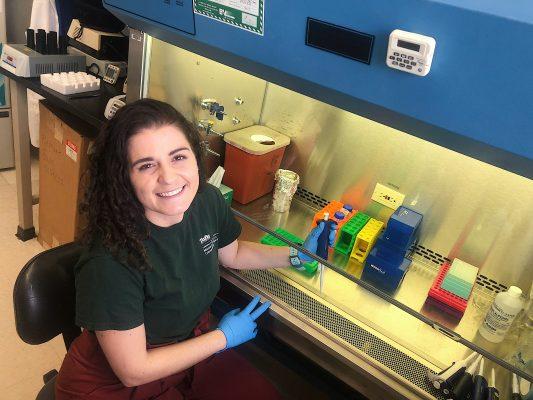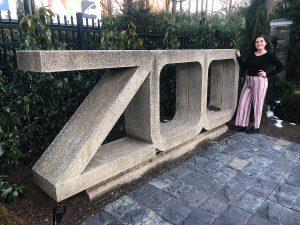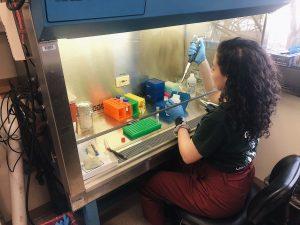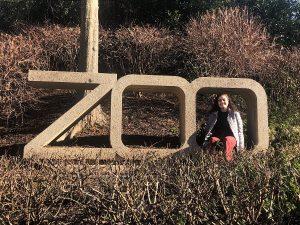-
About
- Leadership & Faculty
- News & Events
-
Admissions
-
Academics
- Graduate
- Advanced Clinical Training
- Continuing Education
-
Student Life
-
-
Accommodations
- Our Campus
-
Accommodations
- Graduate Resources
-
-
Research
-
Hospitals & Clinics
- Emergency Care
- Hospital Services
-
Community Outreach
- Volunteer
Testing for Elephant Endotheliotropic Herpesvirus in the Nation’s Elephants at the Smithsonian’s National Zoo
Elena Iacono, MCM’19 Discusses her Winter Externship with the National Elephant Herpesvirus Laboratory at the Smithsonian’s National Zoo in Washington, DC

When I entered the MCM program, I had an inkling that I may want to get more experience in a laboratory setting. Through some experience I had gained in my undergraduate years, I garnered a great appreciation for the lab, and found it to be a setting where I could really thrive. I sought out an externship at the National Elephant Herpesvirus Laboratory (NEHL), and am so grateful for the experience I had there.
Elephant Endotheliotropic Herpesvirus (EEHV) is a virus that can cause devastating hemorrhagic disease, primarily in Asian elephants but also in African elephants, and which impacts captive and wild elephants alike. The NEHL at the Smithsonian’s National Zoo receives samples each day from zoological institutions across the United States who have their elephants routinely tested for EEHV, since the disease must be caught early on if there is any hope of an elephant surviving its progression.
The NEHL also receives samples from elephants who appear to be feeling “off”, stressed, have experienced birth recently, or are showing any signs of illness. My daily duty at the lab was to receive samples, and perform the subsequent testing. Samples are usually in the form of whole blood, serum, trunk wash, or tissue, if from a recently deceased elephant. Once samples are received, viral DNA is extracted and a polymerase chain reaction is performed to detect the amount, if any, of viral DNA in the sample.
At the lab, I was able to learn a good deal about laboratory management practices, which I also hoped to gain insight on during this externship. I was able to develop a much deeper understanding of PCR than I had previously. I learned a great deal about the unique way the NEHL is organized, funded, and maintained. I enjoyed discussing these aspects with Erin, the NEHL’s research specialist, and also carryin
g out some of the laboratory organizational tasks that I could complete with my skillset – such as stocking reagent aliquots, or updating laboratory spreadsheets. I was also grateful to have been able to learn from other department members as the opportunity arose. I observed a few veterinary procedures in the hospital and out in the park, which was always an interesting change of pace. I also was able to observe quite a few necropsies, which was another invaluable experience to supplement my current education in Conservation Medicine.
During my time at the NEHL, I was able to gain an appreciation for laboratory management from a hands-on perspective, learn invaluable laboratory skills, and gain quite a bit of knowledge about molecular techniques and EEHV. I gained everything I hoped to from this experience, and was glad and grateful to be able to contribute to such important work even for a short time.


